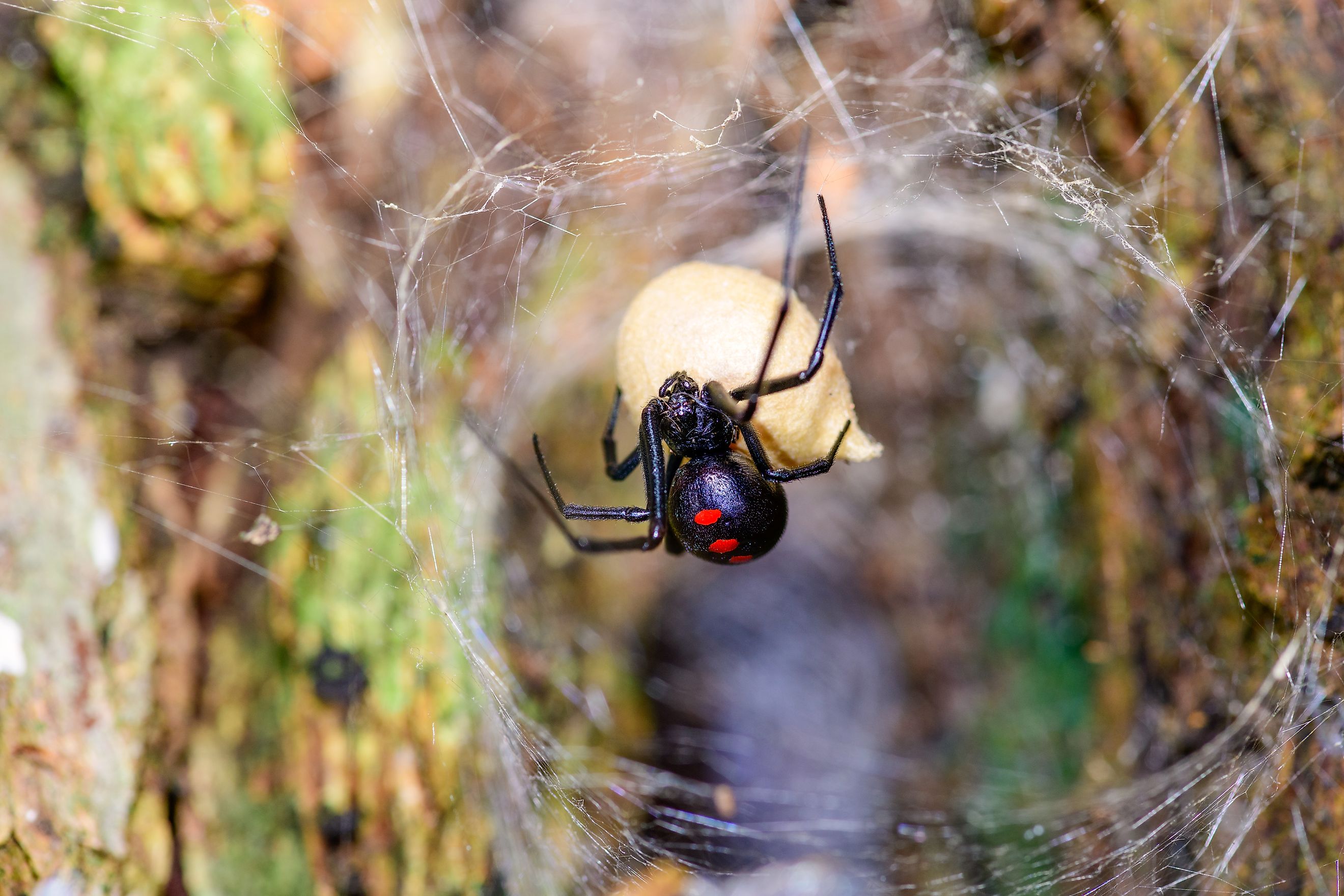
7 Most Venomous Spiders In Arizona
Arizona is a southwestern US state that thrives on tourism and is a famed destination for adventurers. With its major commercial, natural, and historical attractions, the state is not unfamiliar with providing a thrilling itinerary for any traveler who likes vibrant and breathtaking wonders. While people often tour the "Copper State" for features like the Grand Canyon, the University of Arizona, or Sonoran Desert landscapes, there is abundant wildlife around, including a great diversity of spiders. These spiders form an important component of the ecosystem, keeping the population of prey in check. While their venoms are primarily designed to capture prey and for defense, sometimes, when disturbed, humans might also not be spared. Not all spiders are equally venomous or dangerous to humans, but the black widow and brown spiders found in the state are definitely ones to be kept at a safe distance!
Southern Black Widow
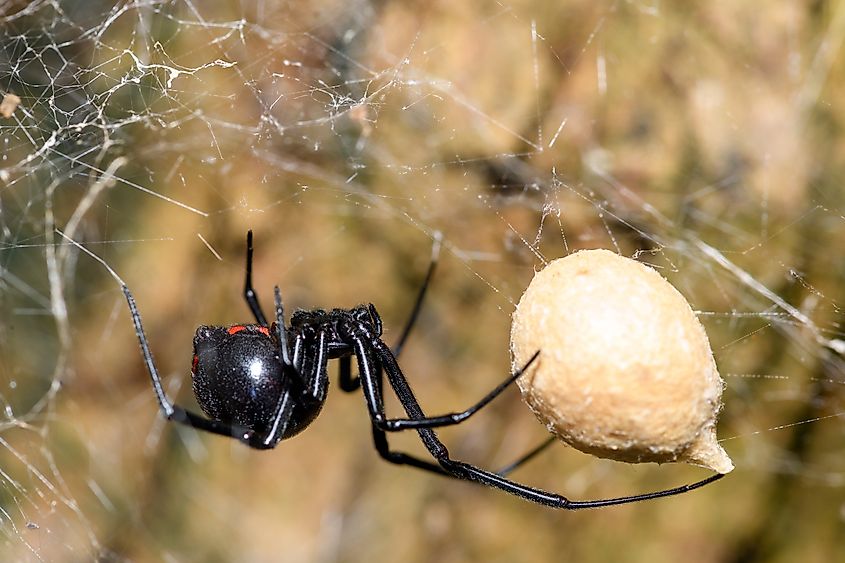
The Southern Black Widow spider (Latrodectus mactans) is a familiar creature across Arizona. With their red hourglass markings and shiny black bodies, they are unmissable. Once identified, it is best to keep away from them to avoid being bitten, as black widow bites can lead to serious complications. The spiders are named so because it is believed that occasionally, the female feeds on the male after copulation.
The Southern black widow lives near the ground in burrows deserted by other animals, rock crevices, or underneath wooden logs. Occasionally, it might approach human habitation to escape cold weather or rain. It is best to keep places neat and clean, as these spiders prefer building webs in undisturbed areas like piled-up garbage, storage areas, etc.
The black widow produces a neurotoxic venom that can trigger serious symptoms like muscle cramping, respiratory pain, and distress in humans but is usually not fatal if treated in time. Children, the elderly, and the sick are more likely to develop serious complications from its bite. The good thing is that these spiders are not aggressive and would not bite humans unless instigated to do so for self-defense.
Arizona Brown Spider
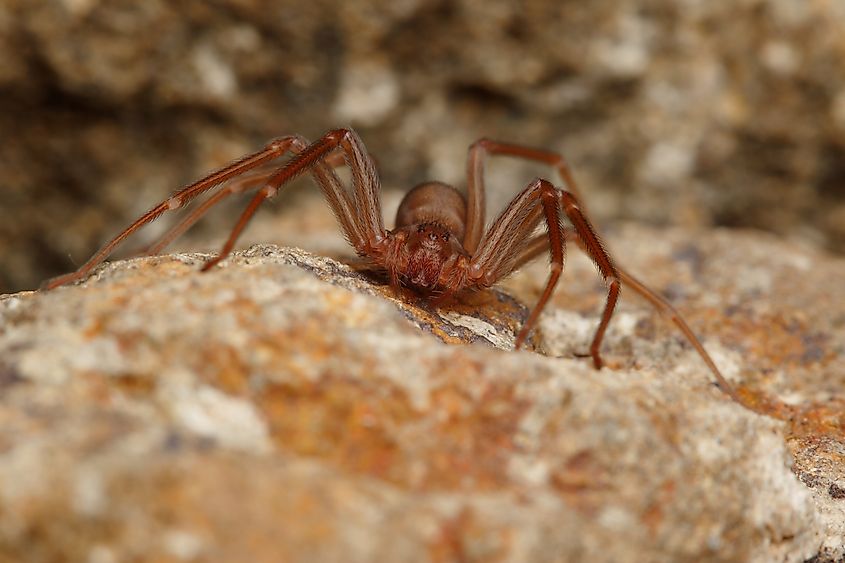
Loxosceles arizonica is another spider species living in the state that can deliver a venomous bite that can lead to serious health issues in its human victims. It belongs to the Loxosceles genera, which includes another venomous species, the brown recluse spider. In Arizona, two species of Loxosceles, the L. arizonica and the L. deserta are found. A bite by this spider is associated with hemolysis, shock, and skin lesions at the bite site. As the name suggests, this species is indigenous to Arizona. Studies have shown that ants are its major prey. Hence, they are often found near termite mounds. A bite by this spider often needs medical treatment.
Hobo Spider
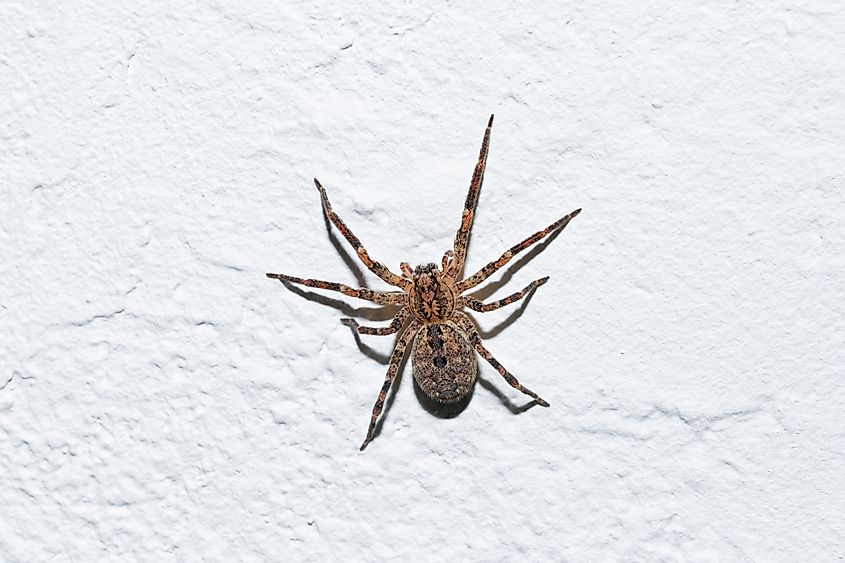
Hobo spiders (Eratigena agrestis) are large and rapidly moving brown-colored arachnids that are members of the funnel-web spider family. They have a widespread distribution across western North America, including Arizona, and also in Europe and Central Asia. These spiders build funnel-shaped webs in sheltered areas like wood piles or brick walls and wait at the end of the funnel for their prey, which are primarily insects.
The Hobo spider was much feared in the Americas in the past after the species was included in the list of North America's toxic spiders in 1987. However, in later years, not much evidence was found to prove its toxicity. A study in 2014 found a hobo spider bite to cause redness, pain, and twitching in the bite area, but no further complications developed, and the symptoms resolved within 12 hours. However, given that the toxicity level of its venom is still contested, it is best to let the hobo alone.
Yellow Sac Spider
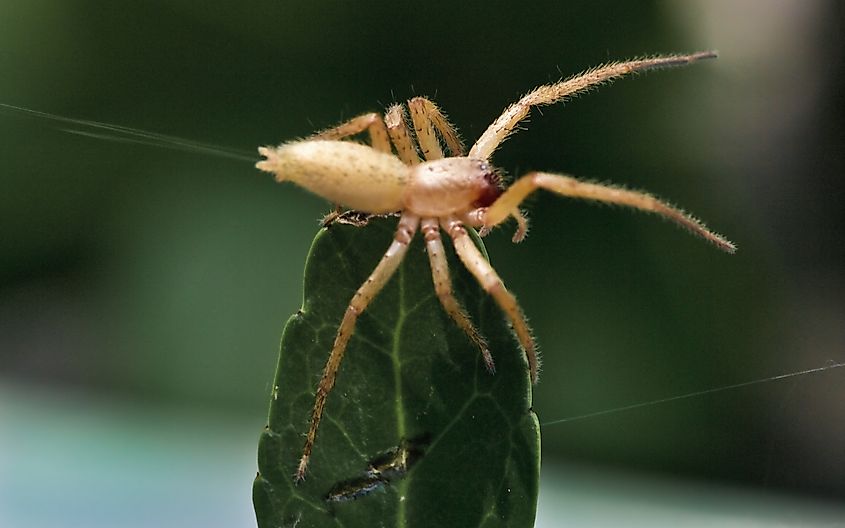
Yellow sac spiders (Cheiracanthium inclusum) are widely distributed in Arizona. They are found across a variety of habitats, from trees to forest floors to crop fields and sometimes even people's homes. These spiders are active hunters and crawl out in the night to hunt prey with the help of their cytotoxic venom which is injected into the prey via fangs. During the day, these spiders rest in their nest-like silk sacs.
Yellow sac spiders can deliver a nasty bite. Their venom has cytotoxic properties, triggering necrosis in the victim's tissues and thus damaging them. However, these spiders are usually not aggressive and envenomation might occur by accident. For example, occasionally, they crawl into shoes or clothes for safety, and when people wear them without detecting the presence of the spider, the latter might bite for self-defense. Local redness and pain might develop at the site of the bite, while numbness could also occur in the muscle at the bite site. In more severe cases, fever and nausea might develop.
Wolf Spider
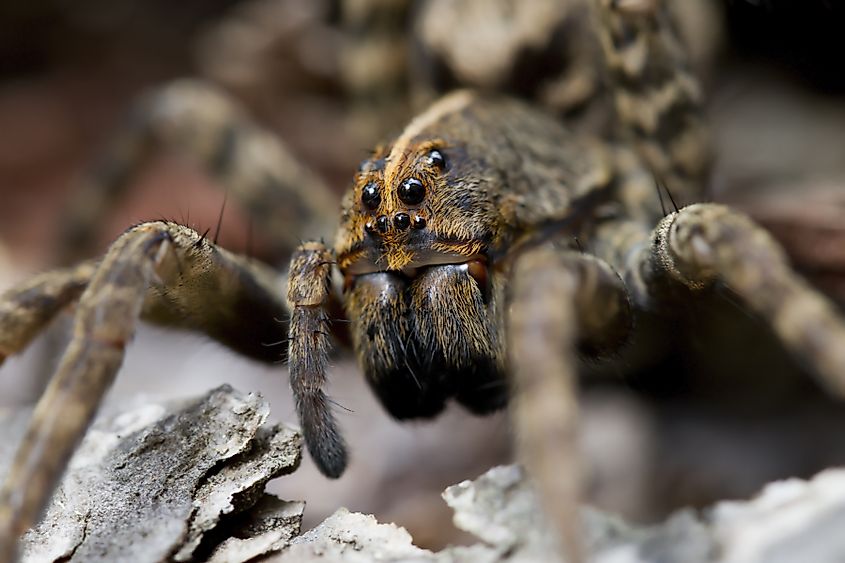
The largest wolf spider found in the continent, the giant wolf spider or Hogna carolinensis is widely distributed across Arizona. This species measures around 18 to 20 mm. These spiders do not spin webs but occpuy burrows left by other animals or dig their own ones in the soil. They hunt by ambushing their prey. Females are known to carry their egg sacs on their bodies during incubation.
Although the venom of these spiders is deadly to their prey, primarily insects, the effect is usually mild in humans. The venom has lycotoxins that not only help the spider hunt or defend itself, but also protects the spiders from microbes present in the prey. If bitten, people might experience pain, redness, and swelling that does not usually demand immediate medical attention.
Western Desert Tarantula
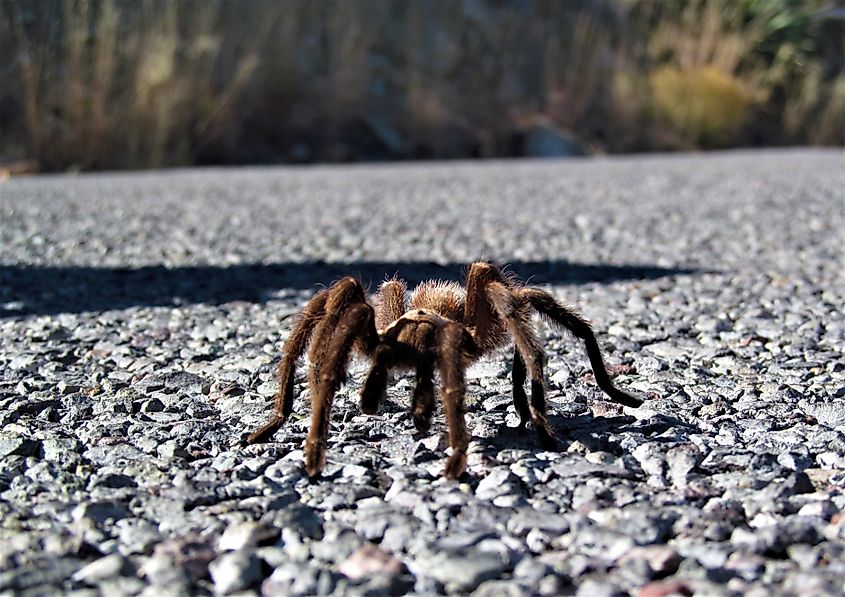
The Western Desert Tarantula (Aphonopelma chalcodes) is an arachnid found in large numbers in the deserts of Arizona and other parts of the Southwestern United States, with its range stretching into adjacent areas of Mexico. The species has been nicknamed "the blonde tarantula," referring to the pale hairs growing on its carapace or upper exoskeleton. The whitish upper side of the spider starkly contrasts its dark legs and abdomen. It has a size of around 3 to 5 inches and lives in burrows in the desert soil that it digs itself or occupies burrows discarded by rodents and other desert creatures. These spiders have a long lifespan, which in males is around ten years and double the figure in females. Grasshoppers, beetles, lizards, caterpillars, etc., constitute the diet of this species.
Although its large size and prominent coloring make it appear quite intimidating, the Western Desert Tarantula is known to produce a mildly toxic venom. Its bite, although painful, is not usually lethal and can be compared to a bee sting.
Desert Recluse
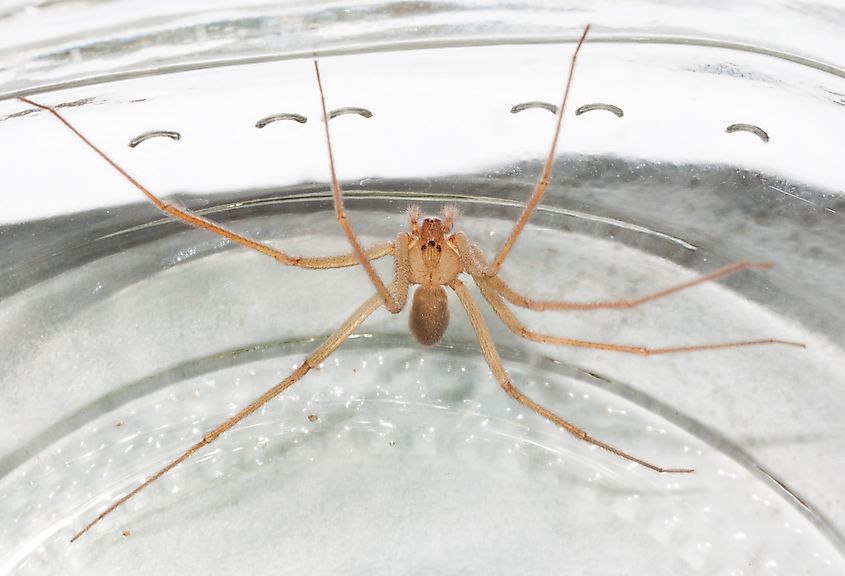
Arizona's Desert Recluse, or Loxosceles deserta, is a venomous recluse spider that lives up to its name. It avoids urban areas, including landscaped lawns, and is found in the wilderness in the desert. In urban areas, it is only found in places where there is growth of native vegetation. As a recluse spider, the species has six eyes and usually grows to a length of 0.19 to 0.59 inches. This species produces a potent venom that causes Loxoscelism in humans, where the victim develops disfiguring skin lesions. Further complications like renal failure might occur in extreme cases. However, human encounters with this species are rare as it is not common in urban landscapes.
All of these arachnids in Arizona are easy to spot but hard to get rid of if messed with. Those who enjoy Arizona's special splendors may find it easy to overlook spider infestations or even a simple sighting of them around. With so much to see and do in towns, caution is always expected when taking a trip to the Southwest!











